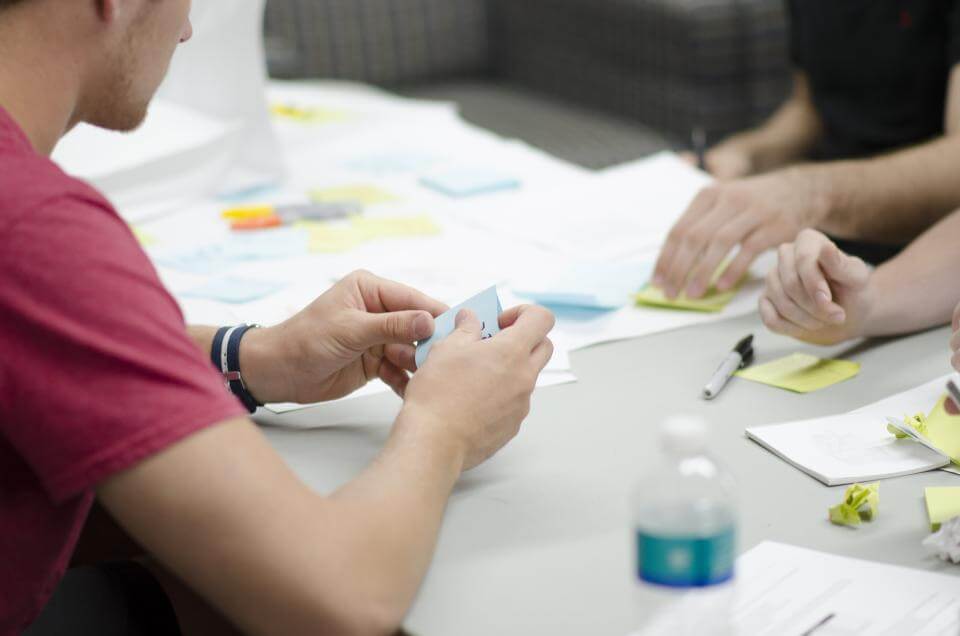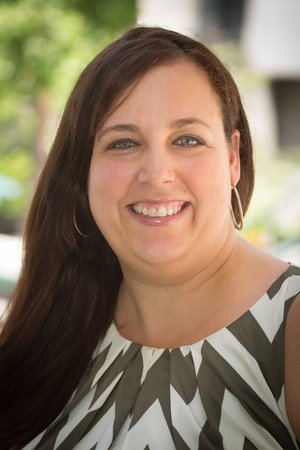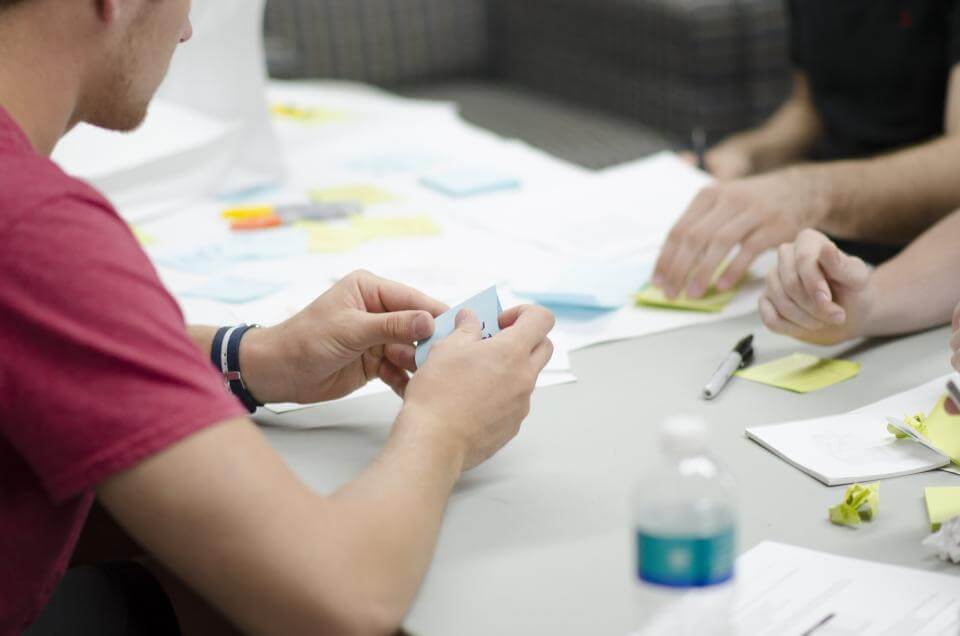Move Management: Helping FMs Plan for Workplace Relocation and Change

 With a background in design, planning and move-management Amy Garber founded Visions Management, a company leading in complex relocation management. Working closely with facilities managers and a diverse range of building occupants, Amy shares her experiences during complex moves, what the workplace trends are today, and what advice she has for FMs and workplace services teams facing change.
With a background in design, planning and move-management Amy Garber founded Visions Management, a company leading in complex relocation management. Working closely with facilities managers and a diverse range of building occupants, Amy shares her experiences during complex moves, what the workplace trends are today, and what advice she has for FMs and workplace services teams facing change.
We asked Amy about her background and what led her to found Visions Management.
AG: I graduated with a degree in interior design from Michigan State University and immediately started working for a large architecture firm in San Francisco. They put me on site embedded at Charles Schwab’s headquarters, and it was there that I learned about moves, adds and changes. I oversaw all of the space planning, re-configuration and managed the space and coordination of all employee relocations. From there I went on to do some consulting work and landed a 375,000 sf ground up hospital project (Hoag Hospital). Although very young in my career I was the Sr. Manager for the procurement, receiving, delivery and installation of all of the furniture and medical equipment, and then also managed the moves of all of the patients into the new building – a three year endeavour. This project and overall experience was a real turning point in my career where I was able to touch and feel all of the different avenues and see where you definitely can not fail, especially when moving patients! It was at that point that I knew I wanted to start my own business.
I really wanted to focus on the move management piece because it’s the last piece of a project that is touched; but one of the the most important. Vendors and trades work really hard on making a space beautiful and communicating the change, but if a move does not go well it spoils it for the entire project team as the experience of a move is the last thing that the client remembers.
I launched Visions Management in 2007 after spending some time working for an international architectural firm . The foundation of our inception was that we were going to be a leader in the move management industry, really focussing on high level customer service paired with a strong knowledge of the move management process and communication piece of the process to end users.

Could you tell us a little bit more about Visions Management and how your approach to relocation and change management differs from your competitors?
AG: Move management is our bread and butter. That’s what we do. We do moves, adds and changes, and manage the relocation. Our focus is truly the moves and the roadmap to communicating change to employees. We are coming in on how to best attack a move, to be able to dissect what the current occupancy plan is and how to best transition the company – whether it’s a technology corporation, a hospital, a law firm, a bank – how to best transition them in the smoothest most efficient and cost-effective way.
I always say that there’s a lot of talk about change management, change management, change management, and any good move manager has in fact been doing change management since the inception of their business. I don’t see change management as anything different than what we’ve already been doing under the move management name, and so that’s what our focus is. As a move manager, it’s critical to the success of the project that we’re communicating change: What’s the new space going to look like? How are they going to enter into the building? Not just how are they going to get their boxes and where are they going to sit, but how do they find the restrooms, best utilize common area space and cafe space? How do they find emergency exits? Where do they park their bikes and charge their vehicles? That’s all part of move management and we’ve been doing that since the beginning of Visions Management.
What are the most common challenges you see facilities managers and organizations facing when upgrading or changing their workspaces, and do you have advice to help overcome these challenges?
AG: I think one of the largest challenges is experience. A lot of times workplace services managers have not taken on moves or projects of large sizes or complexity. We’re dealing with a much younger generation that has high expectations, and it’s not so much that that’s challenging – because it should be expected of us as a vendor to service that client with answers that are quick, and the right answer right away – but there’s also a process to get across the finish line and the approach that we have is: Let’s do it the right way, Let’s not cut corners. But again, if we communicate early on and keep the client in-the-know and they understand what key milestone dates are or what to expect when, we overcome a lot of those challenges early on in the process and, quite frankly, at Visions Management we don’t encounter those late in the game.
That said, another challenge is that things can change at the eleventh hour. It’s common for Workplace Services to sometimes allow their end users and staff to have too much say in the process, and that’s not a bad thing, but they can lose sight of what these critical dates are, and when we need answers, and that can push things out further and further. Our mindset at Visions is that they’re the client so if we get certain things at the eleventh hour, we’re going to get it done and we’re going to get it done right. It is our job to guide our clients towards what will make the project the most successful, and therefore we can work under any circumstances.
We wondered, in the almost 10 years of Visions Management, what have been the biggest changes Amy has observed in her industry?
AG: The densification of space, shoehorning more people into workspaces, has definitely been huge. Also the amenities that are being offered to the employees. So much thought is put into space and how the space is to be used: soft seating, game rooms, cafeterias – and not just standard cafeterias, it’s cafe space with full time chefs.
Everything is technology driven now too. Conference rooms are being booked online or at the source with ipads right at the conference room doors. What we’re seeing a lot is that the workplace is really thought out for the end user in mind as opposed to just being a sea of workstations for heads-down work.
To follow up on that, what are the top trends you’re seeing in office design and the different uses of office space that you’re seeing right now?
AG: I’m seeing a combination of what we would call common area, or public space, where you have a lot of ancillary-type pieces of furniture that can be collaborative where one can do both heads-down work with a laptop and headphones but also have a collaborative meeting sitting at lounge chairs and ottomans, putting your feet up. We’re seeing the integration of games rooms mixed into the overall office environment where it’s very communal, like bench seating, where people are actually able to see their neighbors. It’s made less about personalizing your individual workspaces and more recognized as being a company wide team environment. Also, we’re seeing a lot of unassigned seats, where there is desk sharing happening and that’s a huge trend that’s going on right now.
What are the top things facilities managers should keep in mind when planning for a move or office relocation?
AG: Start early. Do not wait until 3 months before a move to start entertaining the idea of your relocation. You truly need to understand your headcount numbers. Look at your occupancy and badge data. A lot of times internal departments will convey to the design team’s set headcount numbers, usually padded; however, by running a report from your security badge software, one can truly obtain an accurate snapshot as to how people are currently utilizing the space. This badge data will assist in understanding how staff currently use the space, for example how many people work remotely 50-70% of the time yet still hold claim to an actual desk. I think that having the conversation early on to get get team metrics is important. Thirdly, key budgetary members should be presented to fully understand what a relocation is going to cost and where it makes sense to procure new furniture versus bringing in existing furniture and where to draw the line in the sand. Finally, the communication piece. Truly factor in what the communication plan is going to be so staff understand the roadmap and what the finish line looks like.
Could you share some elements that facility managers should keep track of when planning for a move?
AG: One of the things they should look at is understanding a per headcount cost, so what does it cost per person to move so that they can prepare some budgetary numbers (those are things that we can provide). It’s important to truly know what their occupancy numbers are. Get those numbers early on so they can know if their head count fluctuates. They’re going to roughly know if they’re hiring in the next 6 months before the move, if another 50-70 people are coming on board, they’ll know where their move number stands 6 months before the move as changes are going on. So a per headcount cost is something good to know. Next, definitely engage a move-manager early on, I can’t stress that enough. Another thing is they’ll want to understand early on what furniture and equipment they’re bringing over, and again, draw a line in the sand – so if they’re going to get new furniture but maybe bring over existing furniture too, like ancillary and soft seating, working with their designer early on in that regards is important.
In closing, we wanted to know Amy’s favorite part of what she does as a professional move manager.
AG: Meeting with and getting to know our clients. Understanding their challenges and being able to solve those challenges from the first time meeting them. I see the initial stress level that they have, their shoulders are tight and their neck is stiff and they’re hyperventilating because the move has to go off without a hitch and then by the third meeting they are so relaxed and they have confidence with us and they’re excited about the move and excited to be working with us. Then, always, the first day of move in. Welcoming all of the staff to their new space and helping them find their new desks and get acclimated is always the icing on the cake for us.
Are you interested in move management on a large scale or want to know more about what Visions Management can do for you? Feel free to get in touch with Amy via LinkedIn, or contact her at [email protected].
Have you been involved in a complex move? What do you wish you could have known in advance? Leave your answers in the comments below!
Photos: Sophia Baboolal, Pexels




